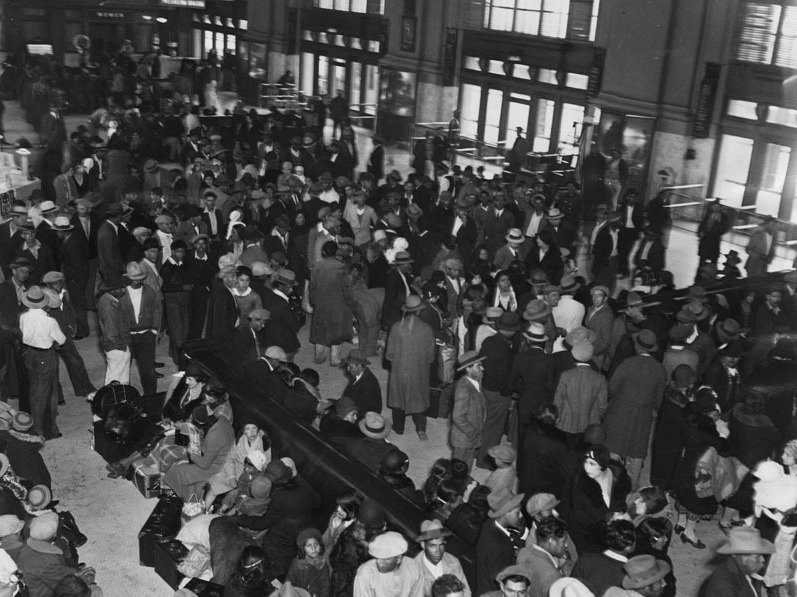To fix America’s “immigrant problem,” a million Mexican immigrants and their children, 600,000 of them U.S. citizens, were removed. Orphans, the sick, the unemployed and others were rounded up, given train tickets and sent to the Mexican border, where Mexico transported them to the interior.
The mass deportations broke up families, causing heartbreak and depression. Many were promised land in Mexico but never got it. Instead they struggled in poverty and isolation, feeling they were neither Mexican nor American, said Marla A. Ramirez, San Francisco State assistant professor of sociology.
Ramirez is referring to what she calls “The Great Banishment,” the title of the book she’s finishing about the Mexican Repatriation Program that from 1921 to 1944 sent 1 million Mexicans and Mexican Americans from California and 20 other states back to Mexico.
The story of that repatriation resonates now in light of President Donald Trump’s promise to deport millions of undocumented immigrants. Ramirez said the same “scapegoating” under Trump – the idea that immigrants are taking American jobs and resources – played out then, peaking under President Herbert Hoover during the Great Depression of 1929-1933.
Q: Whose idea was this, and what laws authorized it?
A: There was no law that specified the legality of repatriations. Instead, they were seen as “voluntary” removals that soon became coerced and forced, sponsored by the U.S. government and later co-sponsored by the Mexican government.
Repatriations were first organized and funded by cities where Mexicans were concentrated throughout California and across the U.S. The Los Angeles City Council was heavily involved at first. But as the Great Depression hit and more Americans depended upon charity, states with significant Mexican populations targeted them for removal. Mexicans who approached welfare offices for help were granted repatriation instead of food and job assistance which came to be reserved for white Americans.
Q: How exactly did this work?
A: California began calling it the Repatriation Program, since legally, a U.S. citizen can’t be deported. There were discussions in the California and Texas legislatures about the “Mexican problem.” In 1921, the Mexican Consulate bought tickets for Mexican workers whose employers refused to pay their way back. But during Hoover’s presidency, the person in charge of deportations promised to remove half a million people. In 1932, when Mexican immigrants in Los Angeles gathered on Sundays at La Placita Olvera, immigration officers surrounded the plaza, instructed people to get in line and literally walked them across the street to Union Station and placed them on trains. No one was allowed to prove they were U.S. citizens, legal residents or even Mexicans – some were Filipinos.
Q: Who paid for the removals?
A: California contracted with Southern Pacific and other railroads, which would provide a train to the border when there were 200 or more paid tickets. The U.S. government covered train travel from different cities across the U.S. to the border. There, Mexico paid for repatriates to travel into the interior. The Mexican government offered farm land to repatriates and their families, hoping they’d provide skilled labor to help Mexico dig out of its own depression. But Mexico did not have enough funds to provide needed tools … Fertile land was only granted to the first waves of repatriates from 1929-1933. Mexico wasn’t prepared to secure the well-being of 1 million new arrivals.
Q: Did people hide or resist?
A: By 1923 people were saying “I don’t want to leave, I now have children here, I want them to go to school here and find work.” They stopped using public welfare even when they desperately needed help since they wanted to avoid repatriation. Others began organizing and formed private assistance groups, mainly through churches. Civil rights organizations like MALDEF that defended immigrant and Mexican American rights were almost non-existent. Many of the estimated 600,000 children who were born U.S. citizens couldn’t get back into the U.S. for 20 to 49 years because they didn’t have their birth certificates and didn’t know how to get them.





